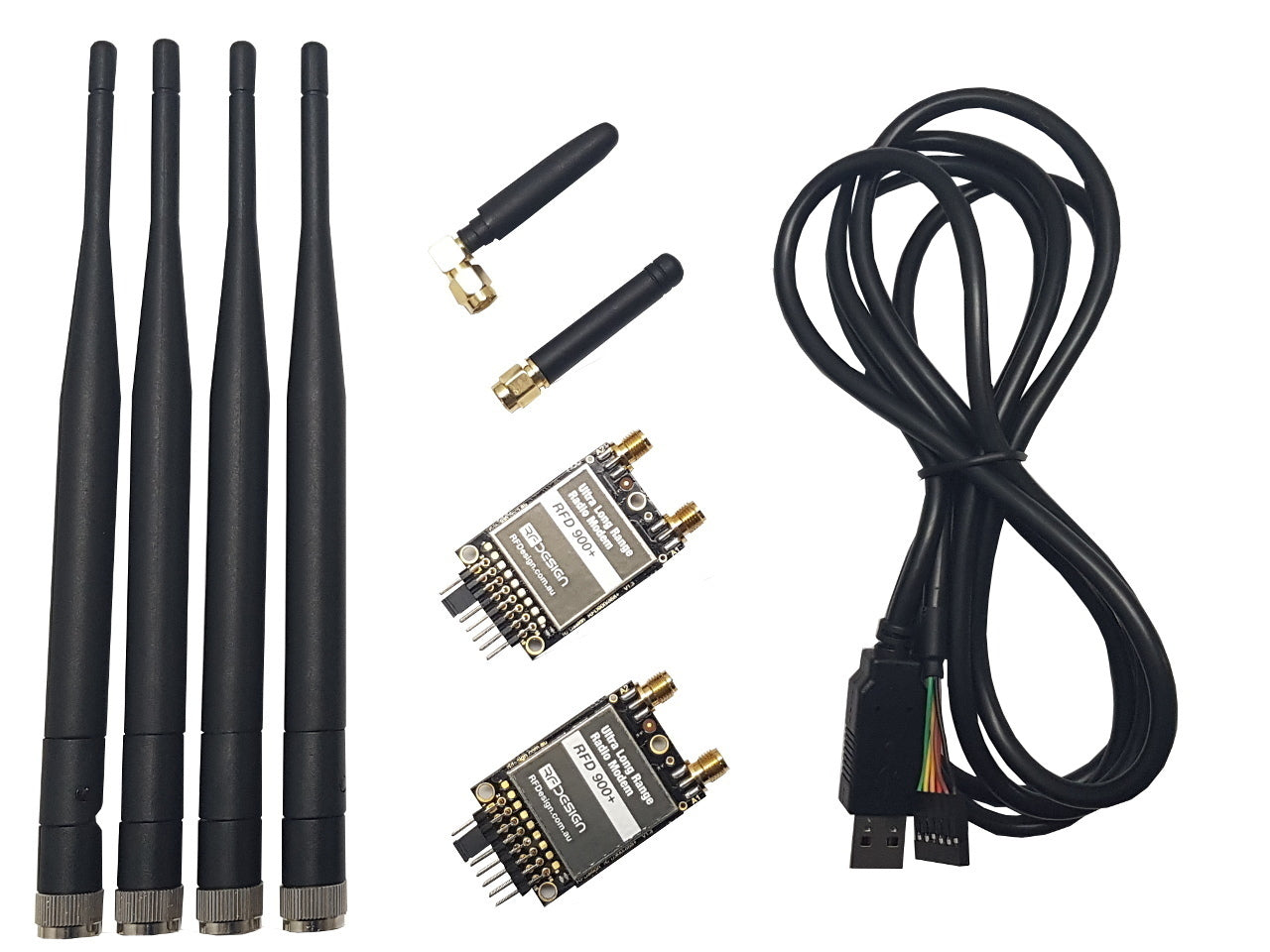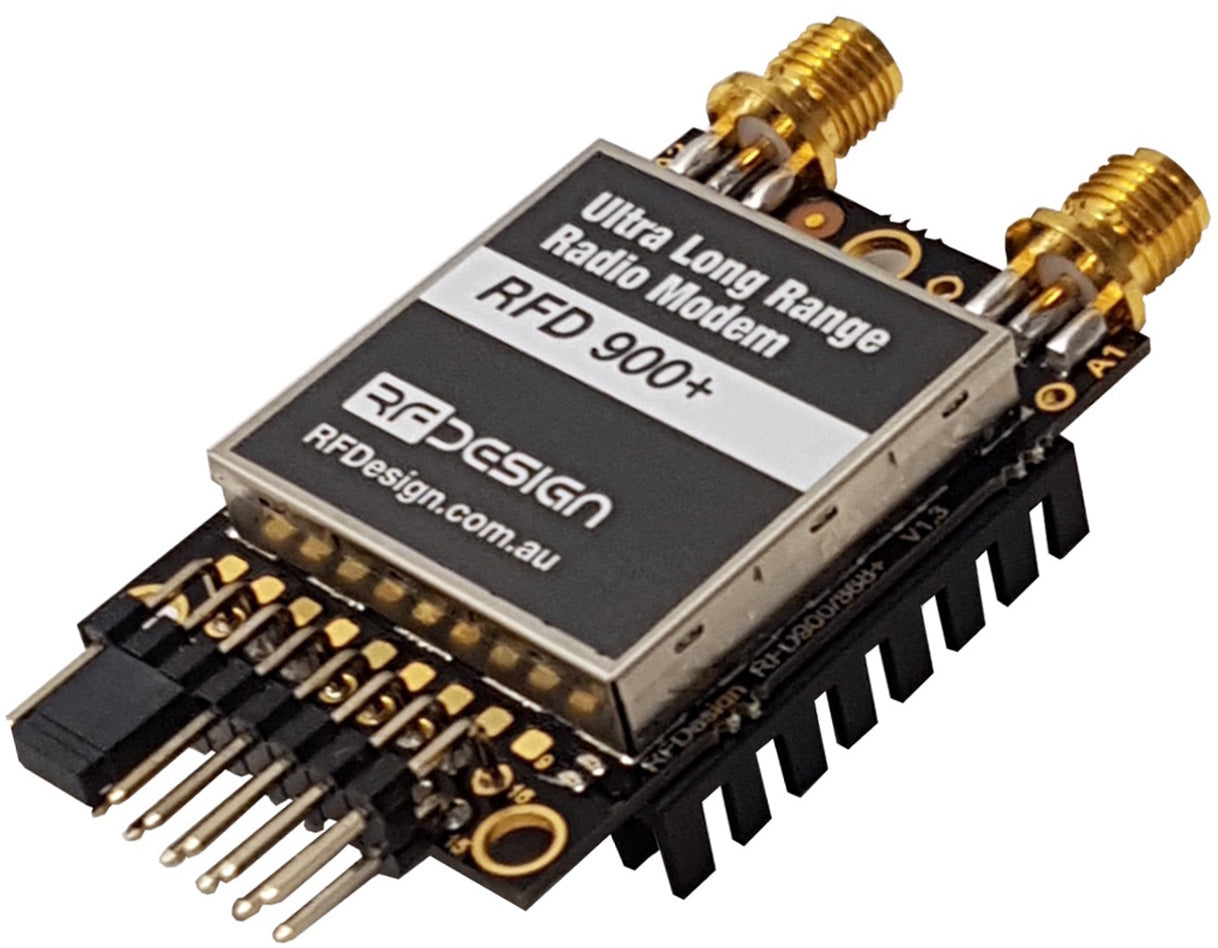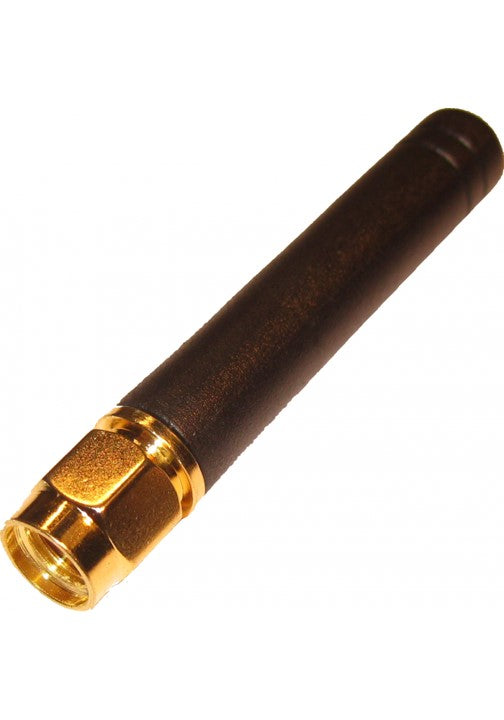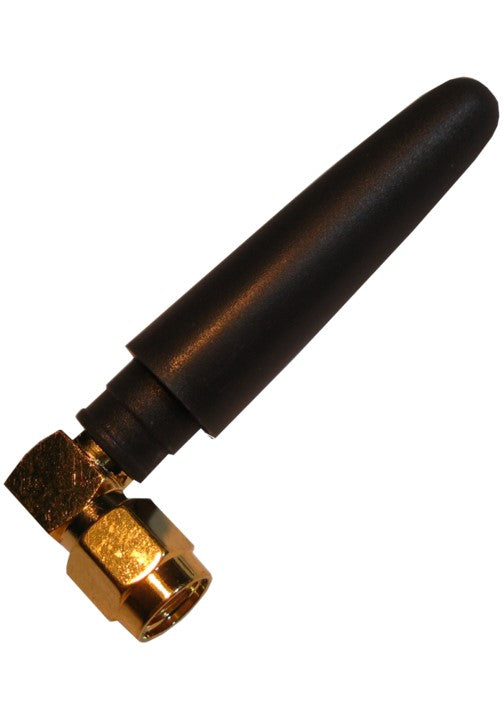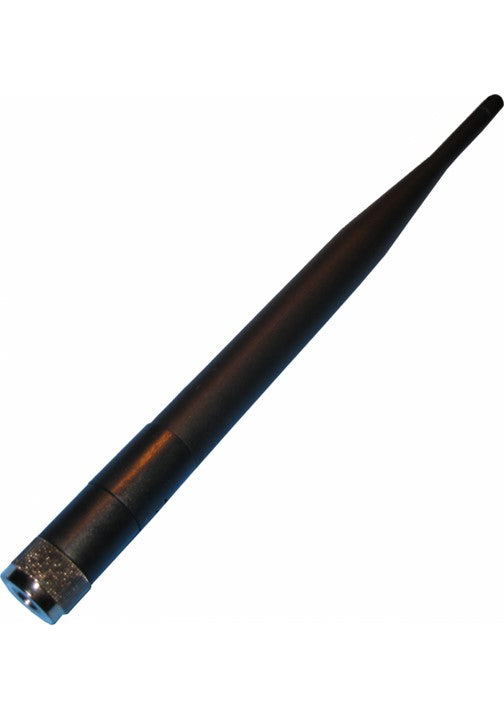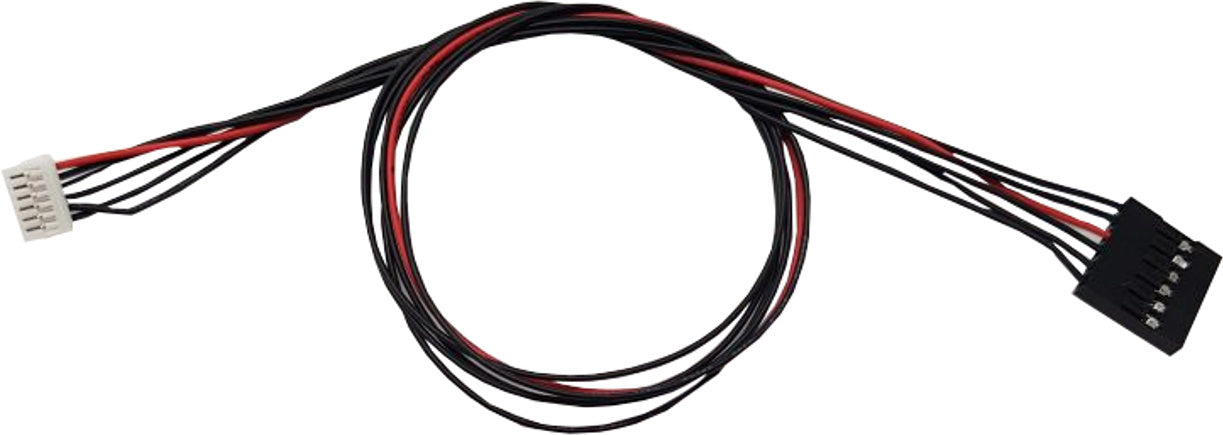Description
MPN: BUNDLE-RFD900+
Manufacturer: RFDesign
This is the ideal solution for long range telemetry or communications. Two RFD900+ modems with antennas for all antenna ports.
This Kit contains the following items:
2x RFD900+ Radio Modems1x Antenna, 900MHz Quarter wave monopole 2.1dBi
1x Antenna, 900MHz Right Angle Quarter wave monopole 2.1dBi
4x Antennas, 900MHz Half wave dipole 3dBi
1x FTDI USB cable
1x RFD900 to Pixhawk2.1 Cable - 300mm
Features:
- Long range >40km depending on antennas and GCS setup *80km demonstrated by Edge Research labs on a balloon!, 57km in India, on Dipoles.
- 2 x RP-SMA RF connectors, diversity switched.
- 1 Watt (+30dBm) transmit power.
- Transmit low pass filter.
- > 20dB Low noise amplifier, high IP3 (Updated on RFD900+)
- RX SAW filter.
- All I/O ESD protected and filtered (New on RFD900+)
- Open source firmware SiK (V1.x) / tools, field upgradeable, easy to configure.
- Multipoint software capability with MP SiK (V2.x)
- Small, light weight.
- Compatible with 3DR / Hope-RF radio modules.
- License free use in Australia, Canada, USA, NZ
Interfaces:
- RF : 2 x RP-SMA connectors
- Serial: Logic level TTL (+3.3v nominal, +5v tolerant)
- Power: +5v, ~800mA max peak (at maximum transmit power)
- GPIO: 6 General purpose IO (Digital, ADC, PWM capable).
Specifications:
- Frequency Range: 902 - 928 MHz (USA) / 915 - 928 MHz (Australia)
- Output Power: 1W (+30dBm), controllable in 1dB steps ( +/- 1dB @=20dBm typical )
- Air Data transfer rates: 4, 8, 16, 19, 24, 32, 48, 64, 96, 128, 192 and 250 kbit/sec ( User selectable, 64k default )
- UART data transfer rates: 2400, 4800, 9600, 19200, 38400, 57600, 115200 baud ( User selectable, 57600 default )
- Output Power: 1W (+30dBm)
- Receive Sensitivity: >121 dBm at low data rates, high data rates (TBA)
- Size: 30 mm (wide) x 57 mm (long) x 12.8 mm (thick) - Including RF Shield, Heatsink and connector extremeties
- Weight: 14.5g
- Mounting: 3 x M2.5 screws, 3 x header pin solder points
- Power Supply: +5 V nominal, (+3.5 V min, +5.5 V max), ~800 mA peak at maximum power
- Temp. Range: -40 to +85 deg C, tested operational from -73 to +123 deg C.
Software/GCS Support:
The software solution is an open source development called "SiK" originally by Mike Smith and improved upon by Andrew Tridgell and RFDesign. A boot loader and interface is available for further development and field upgrade of the modem firmware via the serial port.
Most parameters are configurable via AT commands, Eg. baud rate (air/uart), frequency band, power levels, etc., please see the 3DR wiki for commands below for now.
V2.x firmware has been updated to support multipoint networking on the RFD900.
V1.x (non multipoint) is suitable for point to point links - the sourcecode is located at: https://github.com/RFDesign/SiK
The user manual / datasheet can be found here : RFD900 Datasheet
A software manual for SiK firmware is here : RFD900 Software manual
RFD900 configuration tool and firmware repository: RFDesign Files
3DR/RFD900 compatible configuration tool: http://vps.oborne.me/3drradioconfig.zip
Integrated support for configuring the RFD900 radios is supported by APM Planner, with other GCS solutions in development.
The default settings are at 57600 baud, N, 8, 1, and 64k air data rate.
Software features include:
- Frequency hopping spread spectrum (FHSS)
- Transparent serial link
- Point to Point, or Multipoint networking
- Configuration by simple AT commands for local radio, RT commands for remote radio
- User configurable serial data rates and air datarates
- Error correction routines, Mavlink protocol framing (user selectable)
- Mavlink radio status reporting (Local RSSI, Remote RSSI, Local Noise, Remote Noise)
- Automatic antenna diversity switching on a packet basis in realtime
- Automatic duty cycle throttling based on radio temperature to avoid overheating
Compliance:
The RFD900 is designed to be compliant with the following standards:
- FCC Part 15.247 (Frequency hopping and digitally modulated intentional radiators)
- AS/NZS 4268:2012 (Radio equipment and systems - short range devices)
The modem is designed for system integrators who will integrate the modem into their own projects and product prototypes. The user is responsible for compliance with local regulations for radio transmitters.

